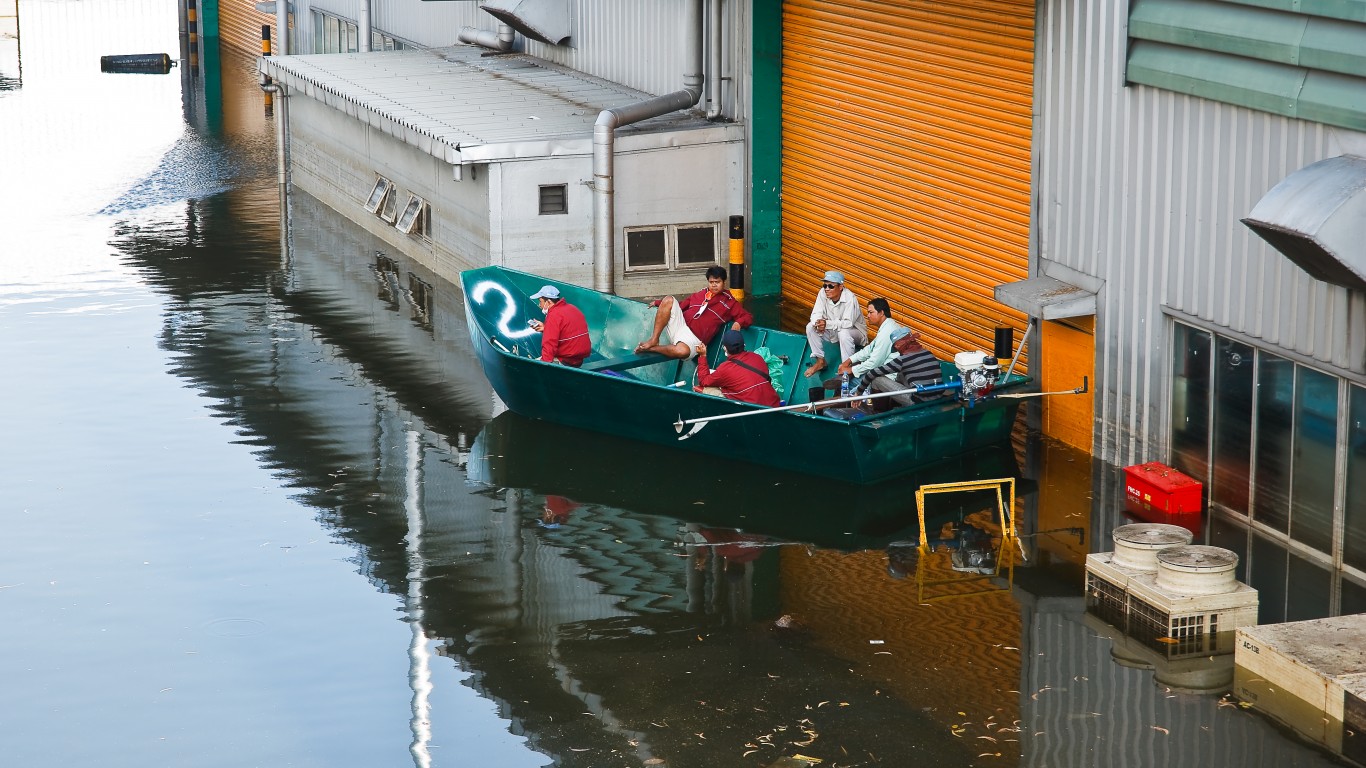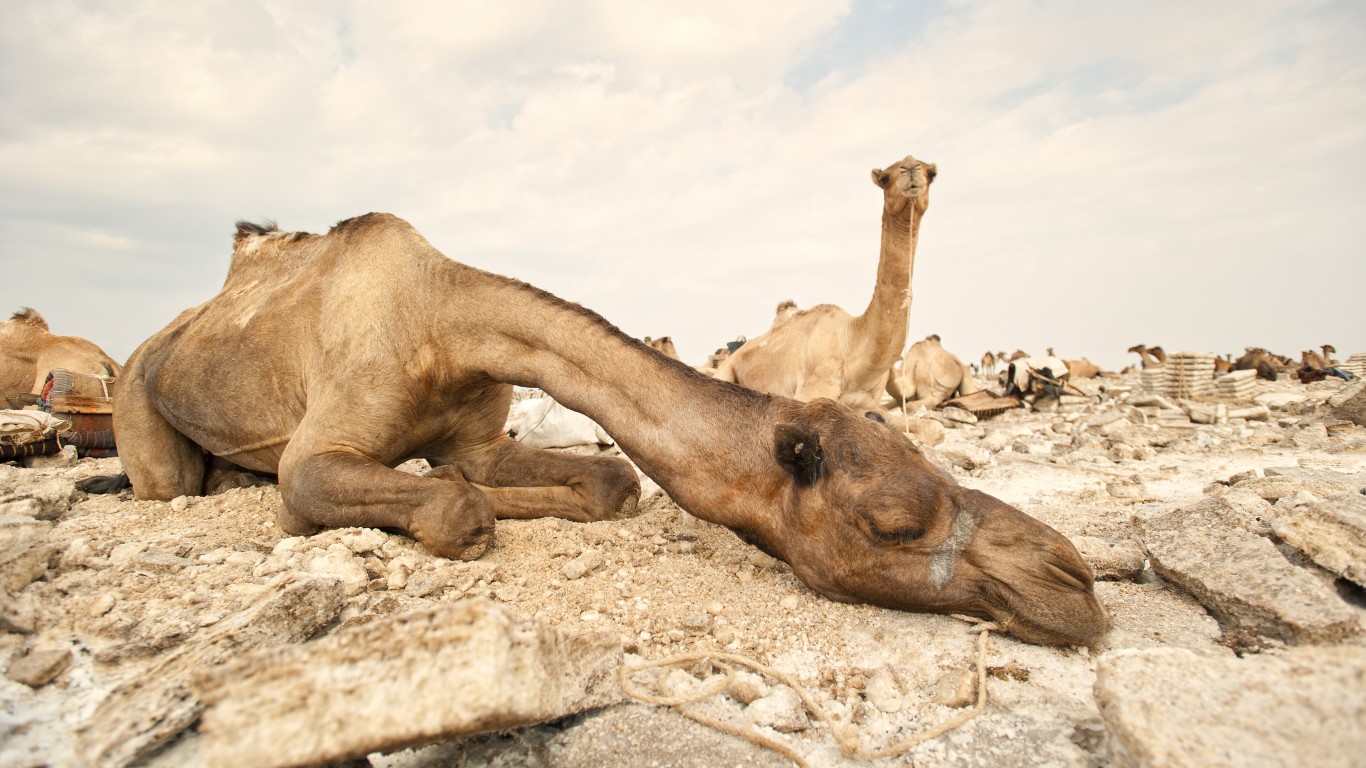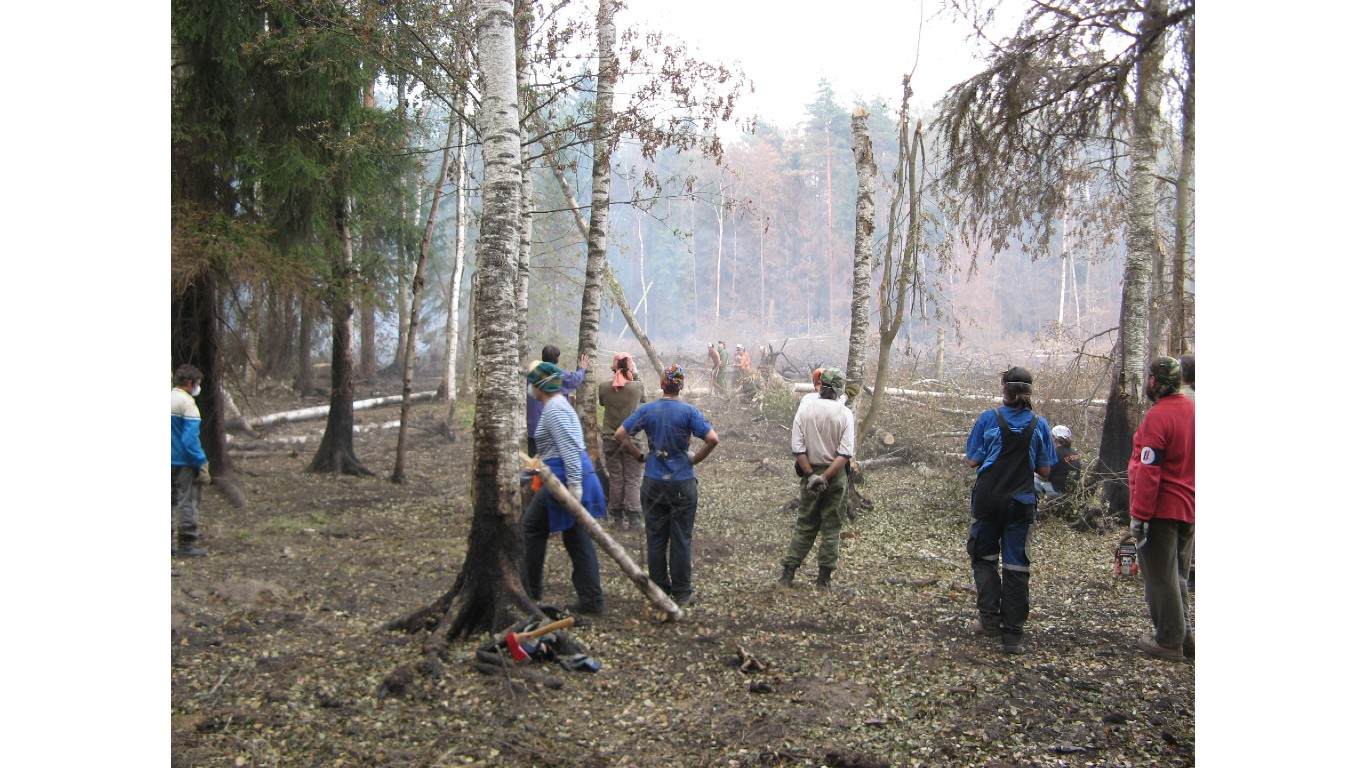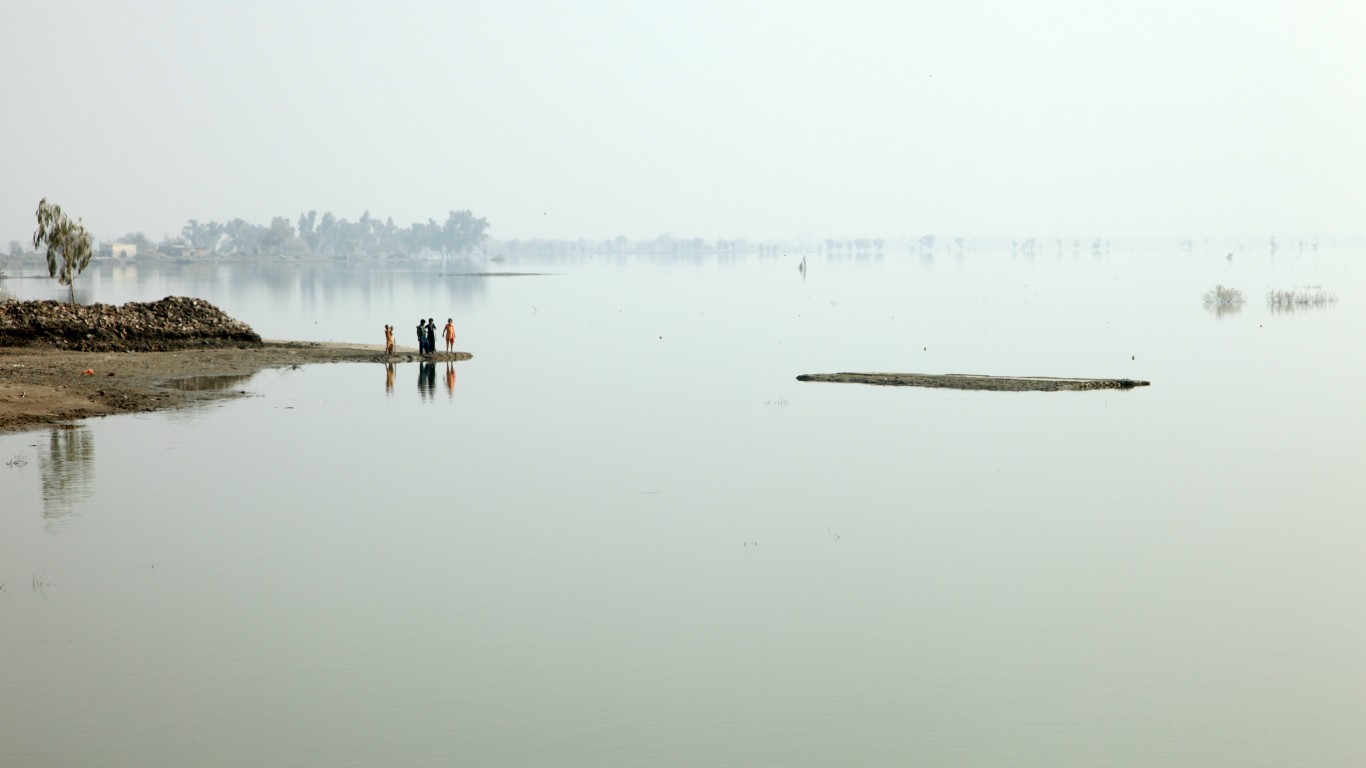2010: Heat wave
> Location: Western Russia
Summer temperatures in Moscow typically remain in the 70s, and large variations in these temperatures can have devastating effects on agriculture. In 2010, when temperatures in the Russian capital soared above a record-breaking 100°F, wheat crops were destroyed, 55,000 people died, and wildfires broke out. The event resulted in economic loss of an estimated $15 billion.
2010: Flooding from monsoon
> Location: Pakistan
2010 was also the year that a monsoon brought deadly flooding to Pakistan. An estimated 18 million people were affected, and 1,800 were killed. The monsoon was caused by an unusual jet stream, which resulted from the same weather pattern that hit Moscow with a heat wave. Between farmland devastation and destruction of public services like schools, the event caused an estimated economic loss of $43 billion.

2011: Tornadic spring
> Location: Mississippi, Alabama, northwest Georgia, Missouri, and Tennessee
In 2011, a slew of tornadoes touched down throughout Mississippi, Alabama, Northwest Georgia, Tennessee, and Missouri. There were 349 tornadoes in total, killing 321 people and causing damage estimated at over $11.9 billion. Joplin, Missouri, was devastated by a mile-wide EF5 tornado, which ravaged the city, killing 161 people. The tornadic spring was the costliest tornado outbreak in U.S. history.

2011-12: Flooding from monsoon
> Location: Thailand, Vietnam, Cambodia
Flooded cars, wading cattle herds, and giant, submerged Buddha statues were but a few striking sights during the extreme flooding event that hit Thailand, Vietnam, and Cambodia between 2011 and 2012. The catastrophic monsoon and subsequent flooding resulted in the deaths of 800 people, causing $2 billion worth of damage.

2011-12: Drought
> Location: East Africa
Between 2011 and 2012, severe drought struck East Africa, resulting in deadly famine across a number of countries. Somalia was one of the hardest hit. The United Nations estimated 250,000 people died as a result between 2010 and 2012. According to the U.K. Met Office, climate change played a major role in the drought event, with climate and precipitation extremes increasing as global temperatures rise.








